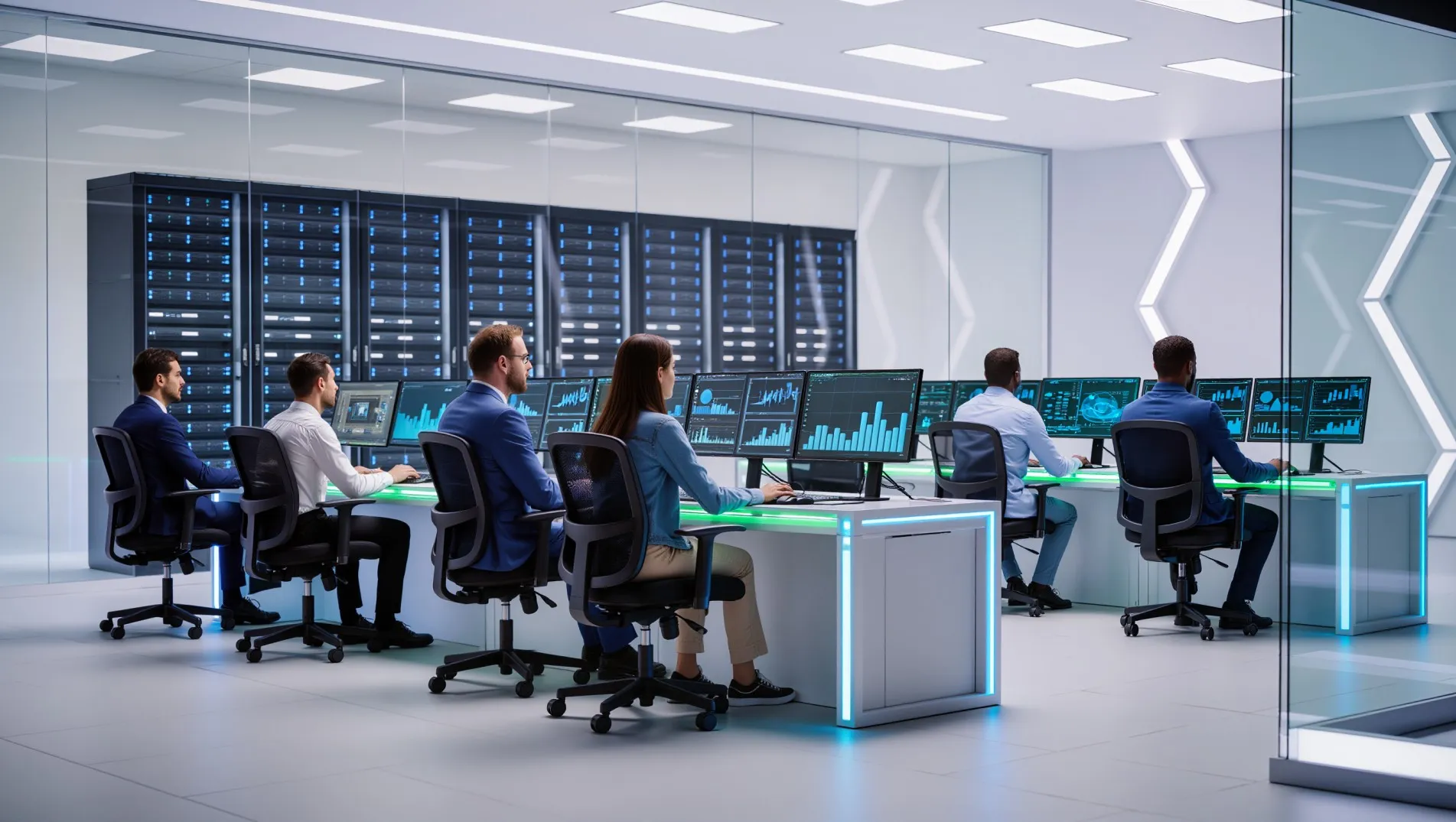August 8, 2024
Mainframe Modernization Strategies: Boosting Security and Compliance | 1touch Insights
Marketing
August 8, 2024
Marketing

Mainframes remain a cornerstone of the modern on-premise infrastructure, but they can be a significant opportunity for improvement. The result is struggling to fully utilize mainframe resources, bolster security with modern practices, and ensure ongoing compliance.One Forrester study found that 91% of organizations with mainframes have had a data breach or compromise in the past five years. And yet, this study also found that only 29% of survey respondents indicated they’re actively taking steps to secure their mainframes, a decline of 12% from the year before.Enterprises know security isn’t optional, but the security of mainframes seems to be considered optional — but likely more vulnerable than other IT assets and requires modernization.Additionally, enhanced security and compliance aren’t all the possible benefits accompanying modernization. You’ll also be ready to fully utilize data for advanced insights, AI training and inferencing, and boost productivity.We’ll be breaking down why mainframes shouldn't be overlooked and instead be a focal point of security, compliance, and overall efficiency efforts.
Mainframe modernization often involves updating existing systems to modern ecosystems that leverage the latest technologies. This approach will look different depending on the mainframe's current state and the process's stated goal. Generally speaking, mainframe modernization might overhaul an existing system’s functionality from the ground up, including refactoring its code base. In contrast, other modernization efforts focus on specific areas for security or innovation enablers. Modernizing your mainframes can also be risky due to being critical to business applications and housing-protected data, making it crucial to carefully plan the process before getting started.Modernization is also a competitive initiative. One study by IBM found that 71% of executives indicated that mainframe-based apps are central to their overall business strategy. The same study found that 4 in 5 executives say they need to rapidly transform to stay competitive, which includes modernizing mainframe applications.
Mainframe modernization can be an extensive initiative that incurs costs and temporarily affects systems your teams rely on. So why is modernizing worth the undertaking?Once complete, your modernized mainframe will provide valuable benefits ranging from stronger security to advanced utilization of historical data. Let’s explore these available benefits.
Data protection is mission-critical, as lacking protection control invites cyber attacks and risks non-compliance penalties. Ensuring mainframe data is secure and meets compliance requirements is critical for any enterprise.A survey found that 72% of executives are planning to upgrade their mainframes to address expected increases in usage, with the three areas for upgrades being:
It shouldn’t come as a surprise that security is a focal point of future upgrades. Investing in mainframe modernization ensures a high degree of data protection to stay compliant and secure.
Installing and operating IT infrastructure is a significant expense for any enterprise, especially considering the burden of maintaining outdated hardware and software. A single incident of unplanned downtime can be extremely costly, as unavailable mainframe data and services can slow operations — or bring them to a standstill.On top of these costs, integrating new applications your business uses with legacy mainframe applications will be challenging and possibly impossible, harming productivity and effectiveness.Fast forward to a modernized mainframe; you’ll be ready to use advanced integrations, avoid unplanned downtime, and likely have lower maintenance costs. The opportunity cost of downtime will be minimized, alongside increased productivity and cut operational costs.
Automation depends on readily available data, system resources, and modern processing. A modernized mainframe is primed for advanced automation that can save time and resources throughout the organization.
One reason why mainframes remain popular is their ability to store massive amounts of data. However, mainframe data can often be unused and unavailable to modern platforms. This data stored out of reach from advanced AI platforms can result in generated insights being based on incomplete data, reducing their effectiveness.Additionally, if your company plans to train a new AI algorithm, you might miss out on a wealth of historical data that will inform the effectiveness of the trained model. Modernization ensures all data can be accessed whenever needed, enhancing data-driven insights and being available for advanced use cases.
Mainframe modernization certainly isn’t quick, but that doesn’t mean it will be overly complex. Enterprises that pursue modernization can benefit from the experiences of other organizations by following established processes and best practices. So, let’s break down a high-level overview of mainframe modernization.
Mainframes can be years or even decades old, creating high complexity. A single mainframe may contain over 50 years of data that ties back to various systems and applications. Mapping copybooks to data sets is a huge and challenging task for any organization. So, where can you start? Start by thoroughly understanding this complexity, dependencies, and how these aspects relate to your overarching goal of boosting security. Look at how systems and data are linked, how that data impacts your workflows, and what steps you can take to modernize these systems without breaking everything in the process.Once understood, the steps you’ll be taking should be meticulously planned to prevent inviting new vulnerabilities, extensive downtime, or other novel issues during the modernization process. Develop a roadmap based on understanding existing complexities and how they’ll be updated, modified, or even eliminated throughout the process.
Code refactoring can be a significant undertaking, so tactfully prioritize which systems should be refactored to accomplish your stated goals. However, don’t neglect lower-priority changes; you’ll be ignoring technical debt that might still have harmful effects.This aspect of mainframe modernization allows for better infrastructure utilization while shoring up security and compliance best practices. An obsolete programming language may offer lackluster performance and security, making the refactoring process well worth the time investment.
Prioritize data security and compliance with every upgrade and change during mainframe modernization, even if you focus on using mainframe data for AI platforms. As you plan upgrades, ensure existing data classification and protection policies apply to mainframe data. Of course, mainframe data is typically unique and may not allow for direct mapping to existing processes, but implementing equivalent protections will keep data secure.Once modernized, you’ll be ready to deploy advanced data discovery and classification tools capable of accessing your mainframe, ensuring all of it is included in your data protection policies.
While mainframe modernization can benefit the organization, there are several possible hurdles and pitfalls to avoid. Being aware of these possible issues before you get started:
Mainframe modernization will look different for every enterprise, but whether focusing on enhancing AI use cases or boosting innovation, it’s critical to focus on security and compliance.Data stored on your mainframe should be effectively discovered and classified to fall under the same protection policies as the rest of your data estate. As a result, modernization should include updating legacy systems and code bases for compatibility with your overarching security and compliance procedures. Inventa by 1touch is an industry leader in automated data discovery and classification, capable of accessing the unique data types of mainframes. Looking for an easier way to manage mainframe security? Our Mainframe Security Posture Management solution will continually parse mainframe data to identify what requires the highest level of security, keeping you compliant in the process.Ready to learn more about how we can help? Reach out to us today to schedule a demo and see how our leading platform boosts security and compliance by ensuring you protect every byte.

The Cyber Attack That Stalled Jaguar Land Rover: A Cautionary Tale of Hyper-Connectivity
October 15, 2025
.webp)
Enable Data Security Posture Management (DSPM) for Your Entire Data Estate
October 8, 2025

Data Governance Without DSPM is Just a Policy Binder
October 8, 2025